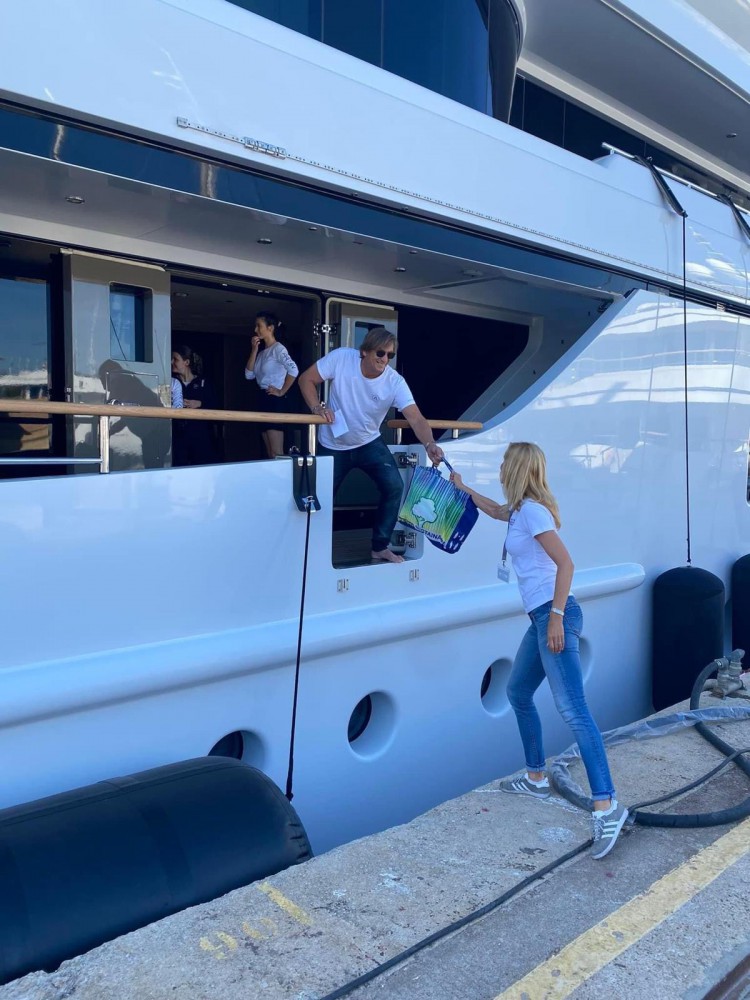Can superyachts be vessels for change?
Despite recent events putting superyachts under the spotlight, various initiatives are in place to create positive impacts…
It is common knowledge within the superyacht industry that it has an immense economic impact throughout its lifecycle – from job creation during the construction phase to the substantial financial support provided to local economies that surround yachts during their operation. The International Superyacht Society (ISS) estimates that a shipyard will employ 350 people for two to three years to build a superyacht, and using the manufacturing multiplier of 5 to 7 to calculate the indirect jobs supported during the new-build process, this means that 2,400 people, both blue and white collar, could be employed through a superyacht new build. Meanwhile, during operation, crew salaries – which are a substantial portion of the cost of ownership – are often spent in the areas superyachts visit, helping to boost these local economies.
While these economic benefits are inherent to our operations, many within the yachting community are taking proactive steps to leverage their resources for the benefit of those in need, as highlighted by the Superyacht Life Foundation, whose mission is to showcase the positive actions and aspects of the industry aiming to improve the public perception of superyachting.
The benefits of employment provided by the industry often extend beyond the financial, with many opportunities in the industry providing skills and personal growth. But with many sectors facing employment crises, many feel more needs to be done to bring in more young, undeveloped people to the maritime and superyacht industries, and nurture this talent and progress their careers within the industry to reap the benefits of the next generation of employees.
Many involved in these efforts do so out of a genuine desire to help those in need. On the other hand, as environmental, social and governance (ESG) requirements become more prevalent, formalising and increasing involvement with these initiatives and organisations will strengthen the industry’s ESG credentials, and so bring advantages from that such as better financing and insurance.
While popular superyacht destinations provide the luxury aura for those on board, the communities surrounding these areas often face stark contrasts in living conditions. As Nick Entwisle, founder and president of the Mallorca-based charity Yachting Gives Back, says, “The yachting industry is surrounded by incredible luxury and it’s very easy to forget that people are struggling right on our doorstep … Employment in the Balearic Islands can be seasonal and low-paid at the best of times.” To address the issues surrounding poverty and homelessness in the region, the charity collaborates with the yachting community to collect donations of food, hygiene products and clothing in a shipping container generously donated by STP shipyard.
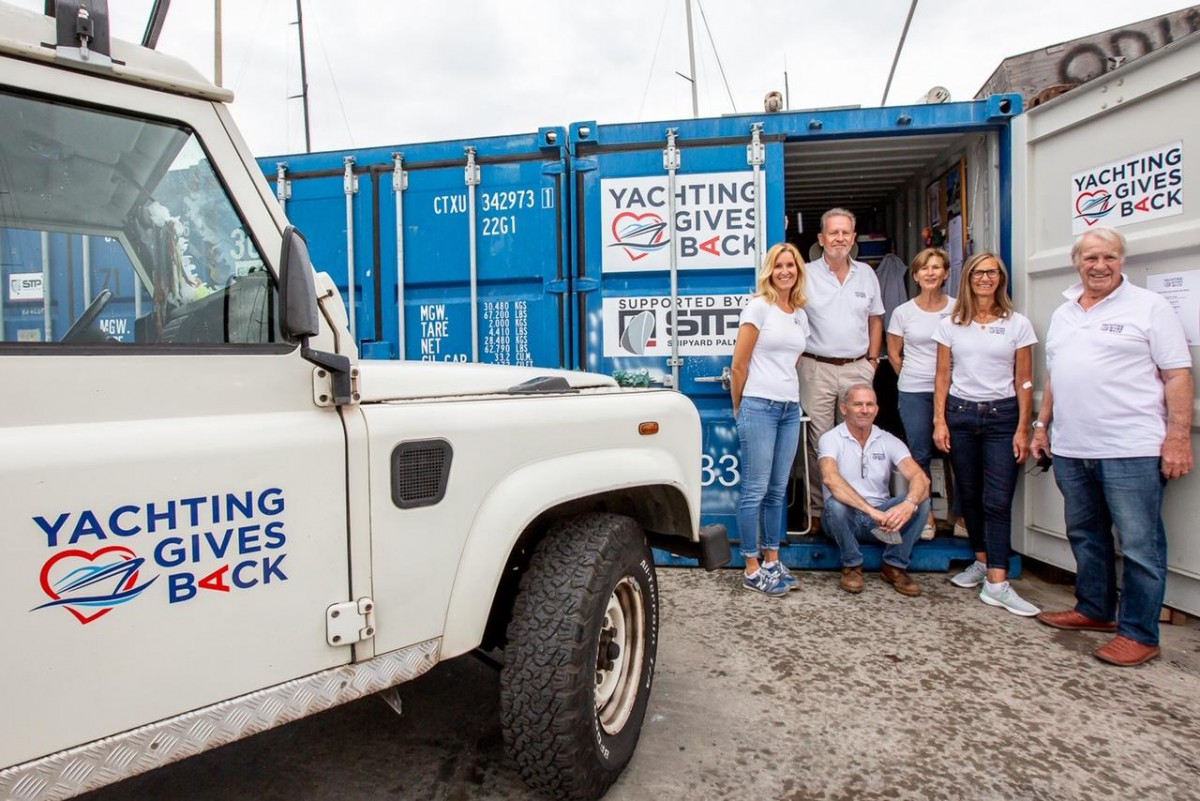
The YGB team at the shipping container within the STP shipyard (top) and yacht crew donating excess food (above). Images courtesy of Yachting Gives Back.
Their donations have increased through word of mouth, mainly among crew, and they’ve collected more donations this year than any previous year. Entwisle says that about 99 per cent of what they are given from yachts finds a new life among the 10 different charities they work with, whether that’s surplus food, unwanted bedding or clothes which are given to homeless shelters, or even unwanted items collected during refits in the many Mallorca-based refit yards, which are then sold on to fund food bank purchases. He says that these items can often be easier to donate than finding the correct recycling channels, so it’s not only easy to give to the charity, but is very beneficial, and new donors often say how glad they are to have found us because they hated throwing things away in the past.
He goes onto say that while the format works particularly well in Mallorca due to its huge number of yachts in a relatively small area , this format could potentially be expanded to similar hotspot areas across the Mediterranean and beyond, and he would be very happy to share his experience with anyone interested in doing something similar elsewhere.
In addition to ongoing support, yachts are uniquely positioned to provide disaster relief, particularly in the aftermath of natural disasters. Their ability to access remote areas and deliver essential supplies, including water through on-board water makers, is invaluable. This was exemplified by the 73-metre superyacht Dragonfly in 2015. After a cyclone hit the remote islands of Micronesia, leaving many in dire need of immediate support, the vessel utilised its on-board medics, water tanks and desalinators to provide critical assistance. More recently, the 93-metre Mayan Queen IV, which assisted search and rescue efforts, saving more than 100 migrants stranded at sea after their boat sank off the Greek coast.
Yacht Aid Global (YAG) is a non-profit organisation which began as a way to coordinate disaster efforts such as these. While still a key part of its activities since its founding, the organisation has expanded, utilising the resources yachts provide, whether financial, material or providing the time of hard-working crew on humanitarian and ocean conservation projects selected from needs assessment. Alongside the suitability of yachts for disaster relief and the access to the ocean for critical ocean research and conservation, it has also found great success in engaging yacht crews in various projects, who are young, energetic and motivated, and who function effectively in a team.
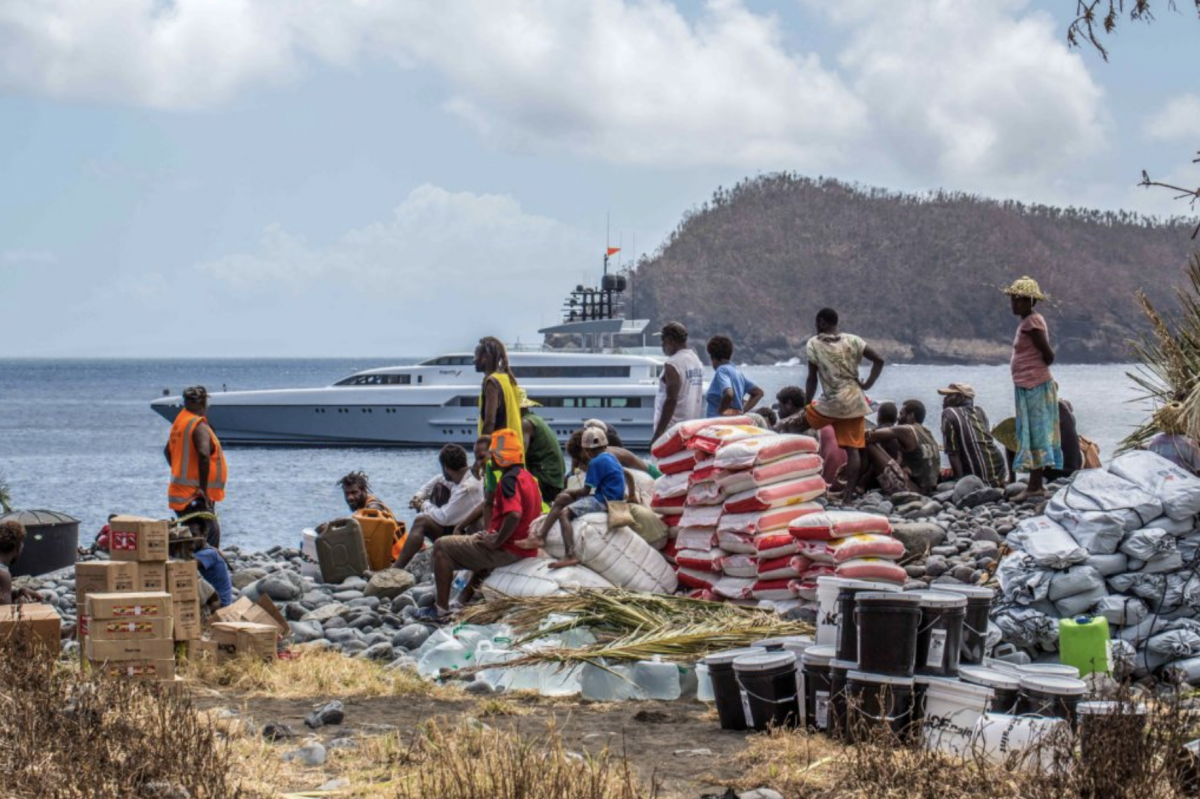
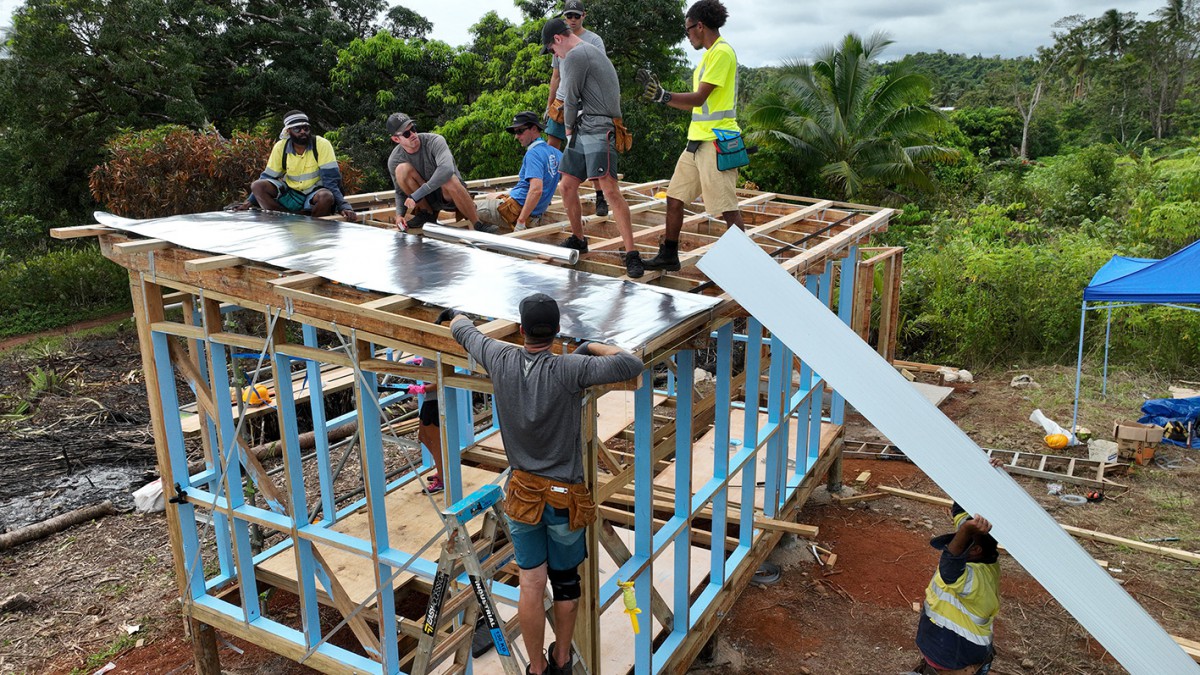
Operation Nasama after Cyclone Pam struck the island of Vanuatu in 2015 (top) and participating yacht crew building homes in Fiji as a part of Operation Viti (above). Images courtesy of YachtAid Global.
Steve Jackman, communications and marketing at YAG, explained that those involved in these humanitarian efforts, such as providing supplies to Ukraine or building schools in Costa Rica, have been amazed not only by the pace the yacht crew work at, but also the humanity they bring to those receiving the much-needed help, such as connecting and discussing the industry with school children. YAG has found significant support from yacht owners and crew who want to get involved in creating these positive impacts and, as Jackman puts it, “want to give back to the communities that give us their land, sea and spirit”. Since 2006 it has engaged with more than 250 yachts across over 175 projects in more than 25 countries to help save lives, alleviate suffering and build stronger communities.
The superyacht industry has a significant opportunity to contribute to the sustainable development of the Caribbean region, to help it become more resilient to these events. Jennifer Johnston Smith, industry consultant and director of business development for Shadowcat, attended the United Nations 4th International Conference on Small Island Developing States (SIDS) as part of the partnership between Shadowcat and Drift Energy Ltd, who are looking to supply green energy to the region. Here she observed a lack of participation from the yachting sector in key discussions about the future of these “big ocean” states, despite the tourism that these nations rely on being heavily supported by the superyacht industry, which brings more positive impacts than the cruise industry. Johnston Smith feels that the industry has an incredible opportunity to provide resources and support for solutions such as infrastructure improvements, capacity building or human capital education, that protect their natural environments, the health of the oceans and ensure the people are building marketable capacities and capabilities to responsibly expand their offering and ensure their ability to make a living in the future.
While yachts and their crews play a vital role in these efforts, the Superyacht Charities Foundation taps into the wealth of shore-based businesses within the industry to raise funds for different causes through various events. To date, over £850,000 has been raised and distributed to various causes, such as the Antibes Lifeboat, the Shambala Foundation – which supports vulnerable people in Mallorca – and respite sailing for those with multiple sclerosis. It also uses some of the raised cash for its ‘Cash 4Causes’ fund to be responsive to different more immediate and short-term causes. The Foundation is currently raising funds to travel to the hurricane-stricken islands of Carriacou (Grenada) and Petit Martinique, where more than 90 per cent of homes were destroyed by Hurricane Beryl, and will be helping to rebuild these communities.
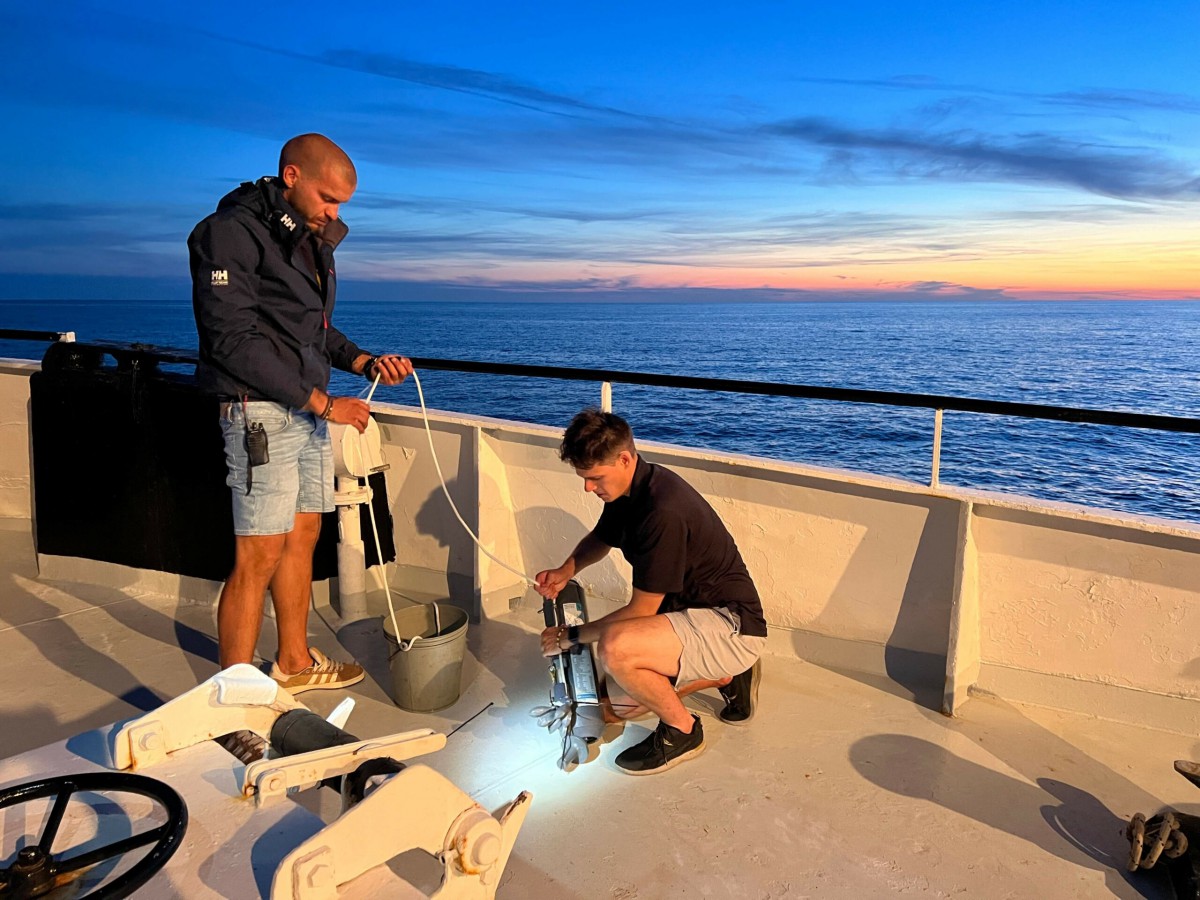
Collecting and analysing water samples for environmental DNA on M/Y TE Streep. Image courtesy of SeaKeepers.
Water Revolution Foundation is also harnessing the industry’s collective efforts in raising funds for Important Marine Mammal Areas (IMMAs), an effective programme of the Marine Mammal Protected Areas Task Force of the International Union for Conservation of Nature (IUCN). The focus is currently on the north-west Atlantic to identify critical habitats for marine mammals, guiding future international marine policies. This project is an opportunity for the yachting community to complete the entire North Atlantic project, an ocean very common for yacht crossings. IMMAs’ programme has currently completed 75 per cent of all oceans to map important marine mammal areas.
IMMA is the first project Water Revolution Foundation has promoted through its developing Ocean Assist reinvestment fund, which involves an independent scientific advisory board composed of renowned ocean scientists who will identify projects to receive periodic investments that have maximum impact in preserving the oceans. The progress of these projects will be quantified and fed back to the yachting community to have a direct positive impact, taking on its ocean stewardship role.
Superyachts can also more directly enable marine scientific endeavours by offering time and space on board to marine scientists rather than the typical financial and resource donations. This facilitates marine scientific expeditions and research, where yacht owners or charterers donate berths and possibly lab space to scientists to carry out scientific research, which due to their often limited budgets possibly wouldn’t otherwise happen due to chartering costs. These scientific research projects are crucial for advancing our understanding of the oceans and their value to the planet. To encourage and manage these collaborations are organisations such as The International SeaKeepers Society (SeaKeepers) and Yachts for Science, which act as matchmakers, connecting research projects with those willing to donate time on yachts travelling to areas of interest.
The SeaKeepers DISCOVERY Yacht Programme has facilitated many scientific projects on superyachts, including collecting and analysing water samples for environmental DNA on M/Y TE Streep this May, to more extensive projects such as on board 46-metre Feadship Mystique during an expedition to the Bahamas in March, which not only accommodated the scientists but also provided a fantastic platform for tagging sharks. An on-board RIB was used to seek and catch sea turtles for tagging purposes, and sediment cores were taken from the seabed to investigate seagrass beds which are a proven carbon sequester.
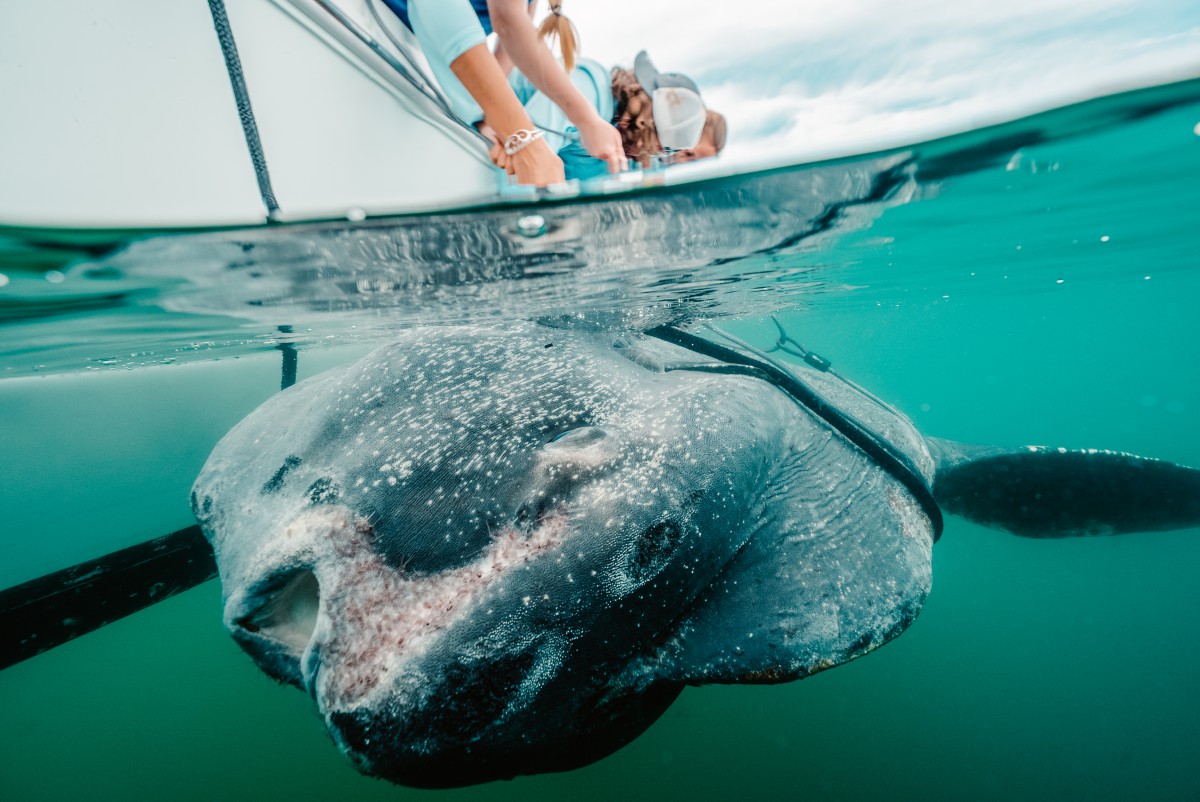
Mola mola-tagging on board the tender of M/Y Calliope. Image courtesy of SeaKeepers.
The impact on the on-board experience itself can vary depending on what the donator is willing to offer to the scientists. SeaKeepers’ DISCOVERY Yacht Programme members have commented that participating in the programme is doing something meaningful, and creating a win-win scenario, with member Steve Marcin, owner of Cabrillo, saying, “I can use my boat, which I love, while also getting the chance to use it for a good cause and help others that are more schooled in ocean conservation to make my coast a better place.” The owners of 43-metre Calliope, who were involved in a mola mola-tagging research expedition in the south-eastern corner of Cape Cod, said the experience was “interesting, fun, valuable and relatively easy”. They found the conversations with the scientists during their time on board fascinating and made connection with their collective interest in the oceans all for minimal costs to accommodate the scientists. Tagging projects are often popular as an opportunity to get up close and personal with marine wildlife.
A more passive project supported by SeaKeepers, as well as FarSounder, who provide real time 3D Forward Looking Sonar, is The Nippon Foundation-GEBCO Seabed 2030 Project, which is aiming to have the entire seabed mapped using modern techniques by 2030. Currently it is at 26 per cent. The project uses submitted bathymetry data such as that from data loggers installed on Seakeepers’ DISCOVERY yachts and from installed FarSounder equipment, which is submitted to obtain a better picture of the ocean floor while not requiring the yacht to adjust their operation. Yachts have a particularly advantageous role within this project as they travel to more remote, less frequented areas which are missing this information.
While the economic benefits of the superyacht industry are undeniable, there is an opportunity to maximise its social impact as well. The industry is in a unique position to give back, and many initiatives and organisations are already in place to facilitate this. However, at the moment, these efforts are very individualistic, done by the few across the industry. In reality, these efforts could and should become the norm across the fleet. To achieve this, more formalised support is needed from those with influence and power, whether that’s yacht management companies able to implement fleet policies to ensure assistance is given to these initiatives, or more organised efforts among crew or companies with the financial capacity to donate to these charities.
Using such resources that can be provided by superyachts, perhaps now is the time to more formally support these causes and generate more benefits to communities and the planet, while secondarily improving ESG and hopefully garnering a more positive public image.
Profile links
The International SeaKeepers Society
The Superyacht Life Foundation
NEW: Sign up for SuperyachtNewsweek!
Get the latest weekly news, in-depth reports, intelligence, and strategic insights, delivered directly from The Superyacht Group's editors and market analysts.
Stay at the forefront of the superyacht industry with SuperyachtNewsweek
Click here to become part of The Superyacht Group community, and join us in our mission to make this industry accessible to all, and prosperous for the long-term. We are offering access to the superyacht industry’s most comprehensive and longstanding archive of business-critical information, as well as a comprehensive, real-time superyacht fleet database, for just £10 per month, because we are One Industry with One Mission. Sign up here.
NEW: Sign up for
SuperyachtNewsweek!
Get the latest weekly news, in-depth reports, intelligence, and strategic insights, delivered directly from The Superyacht Group's editors and market analysts.
Stay at the forefront of the superyacht industry with SuperyachtNewsweek


